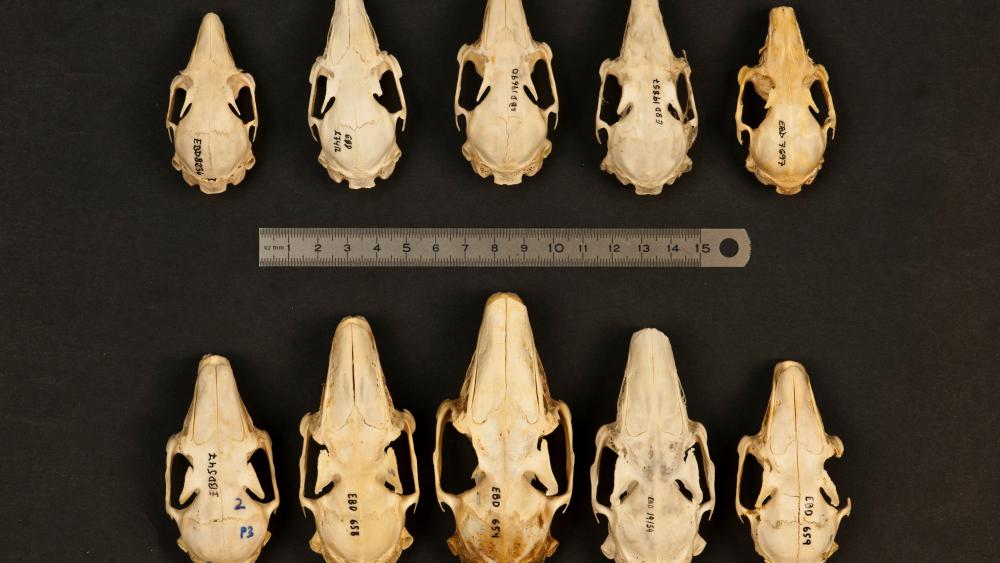
Many mammal species are highly variable in their body size, here illustrated by the sizes of rabbit (Oryctolagus cuniculus, upper row) and hare (Lepus europaeus, lower row) skulls. The picture was taken with skulls from the collection of the Estación Biológica de Doñana-CSIC, Sevilla, Spain. | © Héctor Garrido (Estación Biológica de Doñana, CSIC)
In Australia, for example, rabbits have devastated large areas of fertile land resulting in millions of dollars of damage to crops each year and the extinction of many native species. In Europe, there are about 13,000 known alien species, which cost more than €12 billion (US $14 billion) in damages each year.
To prevent further problems, scientists have searched for general traits that could characterize successful invaders. Unfortunately, this search has had limited success. In a new study published in the journal „The American Naturalist”, Manuela González-Suárez (Estación Biológica de Doñana CSIC, Spain), Sven Bacher (University of Fribourg, Switzerland) and Jonathan Jeschke (Technische Universität München, Leibniz-Institute of Freshwater Ecology and Inland Fisheries and Freie Universität Berlin, Germany) suggest that previous research largely failed to identify predictive factors for invasion success because it generally focused on average species traits. The authors argue that species exposed to a novel environment will have higher chances of surviving if they are variable and can therefore adapt to many different environmental conditions.
The study analyzes a global dataset of introductions of mammals to locations outside their native ranges and shows that species with large variation in body size establish more often.
These findings can help predict and prevent new invasions, for example by focusing control measures on the most variable species. In addition, the study can also help improve the control of biological pest organisms or the reintroduction of species of conservation concern.





